Text
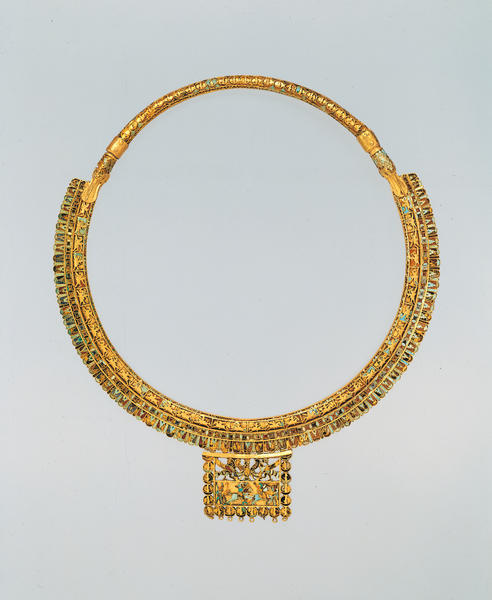

Gold pectoral inlaid with turquoise, lapis lazuli, glass, and carnelian, Achaemenid Empire, 6th-4th century BC
from The Miho Museum, Kyoto
#achaemenid#historical artifacts#ancient history#history#artifacts#achaemenid persia#achaemenid artifacts
681 notes
·
View notes
Text
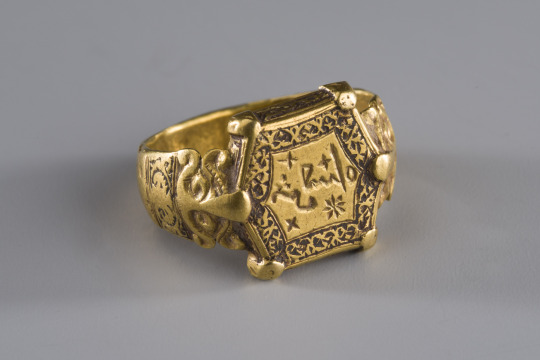
Gold signet ring, Iran, 13th century
from The State Museums of Berlin
391 notes
·
View notes
Text
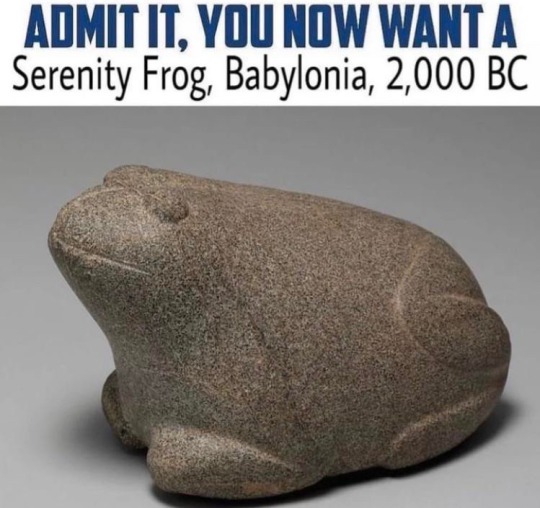
#I DO#I want him to join my party as a little buddy#serenity frog#babylonia#history#historical artifacts#artifacts
2K notes
·
View notes
Text
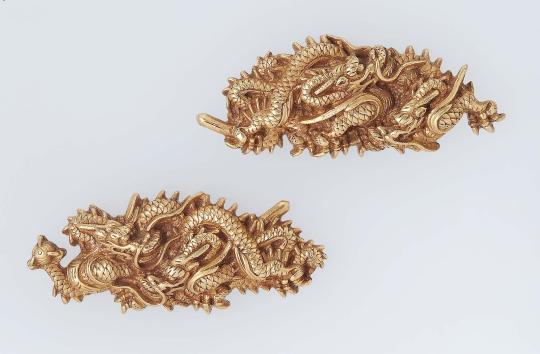
Gold dragon sword mountings, Japan, 16th century
from The Museum of Fine Arts, Boston
134 notes
·
View notes
Text

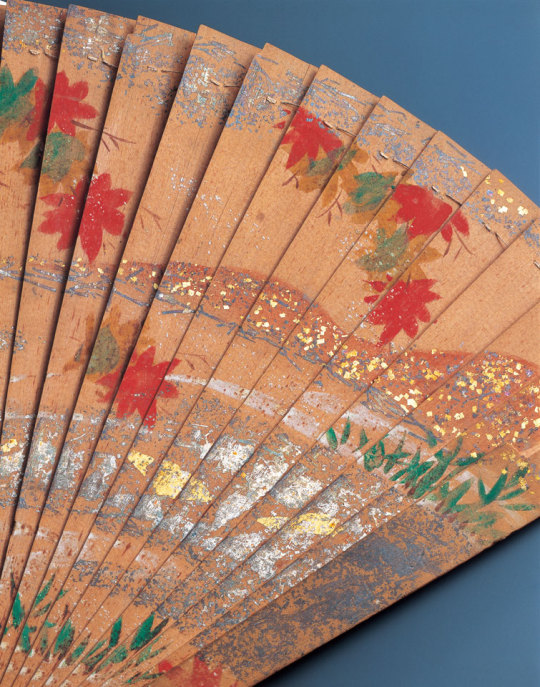
Cyprus wood fan, Japan, 14th-15th century
from The Miho Museum, Kyoto
170 notes
·
View notes
Photo
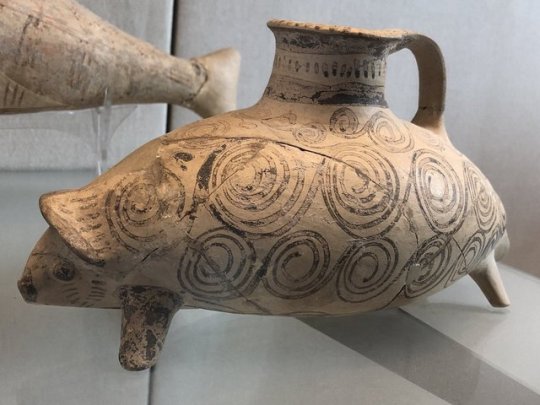
Hedgehog from ancient Ugarit, 1400-1300 B.C.
~Hasmonean
773 notes
·
View notes
Text
The fireplace:

This was actually an Achaemenid Persian lion with eagle wings. It was discovered for the first time in Hamadan(hegmataneh). During the Achaemenid period, it was one of the golden and royal vessels in which they drank in it. It's called "rhyton"



What interesting things have you noticed in the movies?⚜️
#NOT THE DRINKING VESSEL NOOOOO#MY RHYTONNN#note: rhytons can also be used to pour drinks too!#someone get my achaemenid drinking bowl I’m gonna cry at the sight#achaemenid persia#achaemenid#history#historical artifacts#artifacts
103 notes
·
View notes
Text
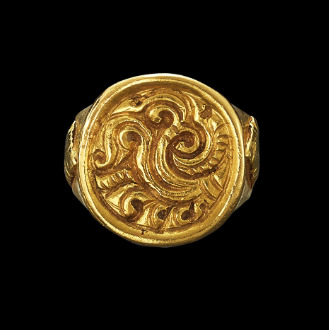

Gold repousse ring with spirals, Java (Indonesia) 6th-12th century
from Sotheby's
325 notes
·
View notes
Text
absolute little guy of the day.

him!
from the National Archaeological museum in Athens. :)
(Zoomorphic vase in the shape of an animal, a little bear or a hedgehog, holding a bowl. Chalandriani, Syros. Early Cycladic II period, Keros-Syros Culture (2800-2300 BC).
23 notes
·
View notes
Text

Gold brooch decorated with garnets and sapphires, France or England, circa 1250-1300
from The Victoria & Albert Museum
544 notes
·
View notes
Text
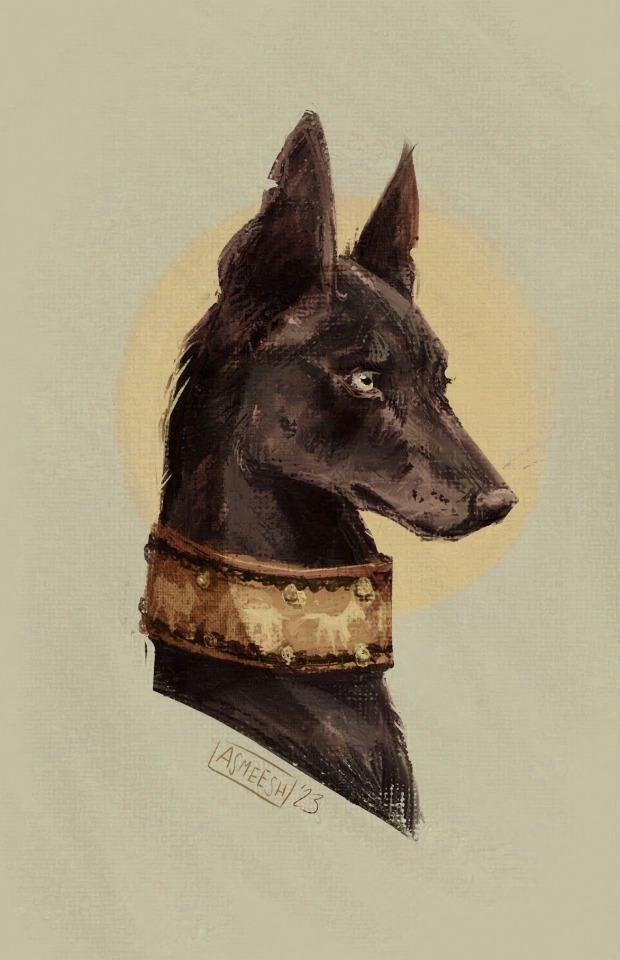

Couldn't resist.
#egyptian#egyptian history#egyptian artifacts#history#historical artifacts#artifacts#wholesome history#egypt
9K notes
·
View notes
Text
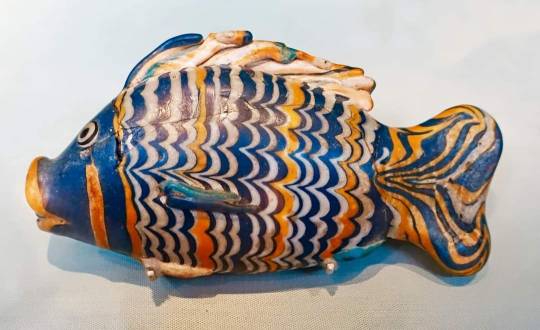
... ancient art ...
An Egyptian Cosmetic Bottle in shape of a Fish, dated (1550-1292 BC) - 18th Dynasty - was found buried under floor of a house in el-Amarna, Nile region, Egypt.
Made of polychrome glass on blue, white, yellow and turquoise blue.
- British Museum
#egyptian#egyptian history#egyptian artifacts#historical artifacts#artifacts#history#imagine having this as a funny little cosmetic bottle
432 notes
·
View notes
Text
Minoan Kilt
The large, structural skirt worn by Minoan women in art is instantly recognizable, and when I made my own I combined current best guesses with my own personal tastes.

My kilt shape follows the hypothesis laid out by Bernice Jones in her book Ariadne's Threads: The Construction and Significance of Clothes in the Aegean Bronze Age. She describes the shape of that of a labrys, a double-headed axe with apparent ceremonial significance in Ancient Minoan culture. This garment may be depicted in Linear-B logogram *166 + we, we-being the backwards-s-shaped squiggle in the center which identifies the piece as a garment.

See pages 336 and 341 in Marie-Louise B. Nosch, The Textile Logograms in the Linear B Tablets
Actual details on construction and materials below the cut:
Construction:
The top and bottom edges of the kilt are concave, so the sides are longer than the middle. This gives the chevron-shape seen on layered kilts in art. In addition, the curved top half makes the skirt flare out, accommodating the hips and giving more freedom of movement to the legs. My kilt measured from my waist to my anklebone at the longest point, and about 1.5 times around my waist.
I chose to make a flounced kilt, with smaller strips of fabric and trim applied to a large base piece, rather than a tiered kilt, in which multiple kilt shapes of varying length are layered one on top of the other, so you end up wrangling 3 layers of fabric around the waist. The flounced kilt saves fabric and gives you a lot more freedom with whatever trim you might want. Jones' diagram for a flounced kilt is seen below:

Unlike the version in the diagram above, I chose not to attach ties to the garment itself both because the linen I used was very heavy and I was concerned about weight, and also because folding the skirt and securing it with a separate tie worked just fine for my tastes. In total I had four flounces: 2 alternating rows each of fabric and fringe.
The vertical edges of most kilts are left plain, probably representing either the selvage or an edge otherwise finished off to prevent fraying. For my kilt, however, I ended up with a couple inches of self-fringe on either side as I adjusted the fabric to the correct width. At least three examples of kilts with fringed vertical edges are known, all three from the so-called "House of the Ladies" in Akrotiri
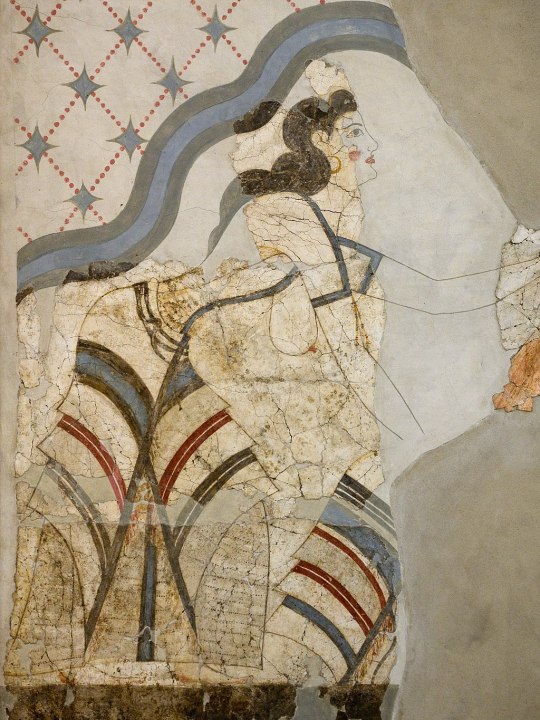

Photos from Wikimedia Commons. Image 1. Image 2.
The vertical edges of these kilts are reinforced with a colored band or tape, probably to keep the garment from unintentional further fraying. Accordingly, I did the same on my kilt. I also like that it gave a nice vertical diagonal to counterbalance the horizontal ones.
Materials
I tried to use mainly linen and wool, the fibers most available on Ancient Crete, but some of my trim was cotton because sometimes you just have to use what's cheap and available in the today times.
The base of my kilt is a heavy, patterned linen in what's called a diaper weave, meaning that a repeating diamond pattern is woven into the pattern itself. A lot of the Minoan textiles depicted in frescoes are characterized by repeating geometric patterns, likely woven into the fabric itself, and that was something I wanted to capture in my own piece. My linen is woven with both cream and natural colored threads. The heavy weight is important to give structure to the garment--otherwise it would be kind of limp. My linen was from Burnley & Trowbridge (shameless plug), as was the plain cotton twill tape I used to bind the top and bottom edges of the kilt, and the dark red wool twill tape I used along the vertical edges.
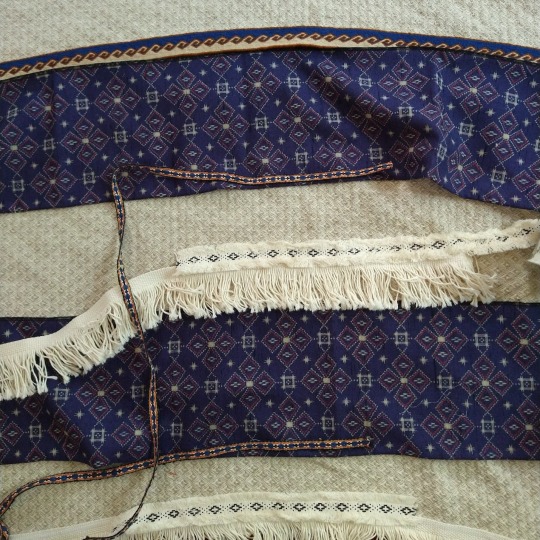
I bought my cotton fringe from a rug supply store. I had to search a while to find a fringe that would work for me, and I ultimately chose fringes with a woven header rather than the more common knotted one, so that it would lay flat against the kilt. I hid the woven header under a layer of cotton fringed trim from Michaels (yes, Michaels) with this really great diamond and dots pattern woven in black.
The blue layers are from a bolt of vintage wool Kimono fabric. Blue appears frequently in frescoes, likely achieved with indigo or woad dye, or even murex/mollusk dye. The fabric is printed with an imitation ikat pattern of diamonds and squares that made me think "the vibes seem right!" because quite frankly, you aren't going to get "historically accurate" Minoan textiles (which there probably isn't enough archaeological evidence to definitively describe) without, like, hand-weaving it yourself or paying someone hundreds of dollars to do it for you (and that price is if the weaver really likes you). Neither of which appealed to my desire to just make a fun, low stress project. Good enough is good enough.
The narrow trim on the bottom of the blue flounces is vintage cotton/poly woven trim. This trim, while narrow, was quite thick and stiff, which was great because it added more weight and structure to the end of my flounces since the wool fabric itself was quite thin.
The top layer is a custom tablet-woven wool trim that I commissioned from MAHTAVAhandicraft on Etsy. I imagined this as the "centerpiece" of my kilt, and I'd arrange everything to complement it.

It's a kivrim pattern, which has itself only been traced to 19th-century Anatolia, but I didn't care. The way it looks like waves reminded me of how central the sea was to life in the Ancient Aegean and Mediterranean and it captured the idea and aesthetic I was pursuing. I mean, doesn't it remind you of these dolphins?

(I like the dolphins)
The whole thing was machine sewn with the exception of hemming and adding trim to the blue flounces. If you were to look at it from the back, you'd see lots of zigzag stitches, because i wanted to be fast! and have fun! not chase some unreachable ideal of "accurate."
As for wearing it, I chose to wear it with the top part folded/rolled down over a belt, so I have a thick tube of fabric around my waist. Many images, like the frescoes above of women with fringed kilts, appear to just show the kilt being tied closed. Other images are so fragmented or stylized that it's unclear what kind of skirt closure was used. Sculptures and figurines definitely show some kind of SOMETHING around the waist, whether this is folded fabric or a kind of belt is unclear. Different art could show different things!
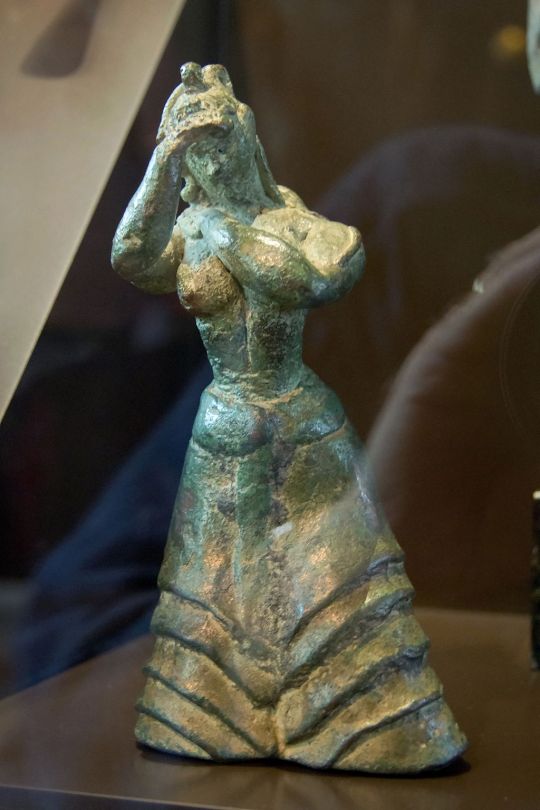
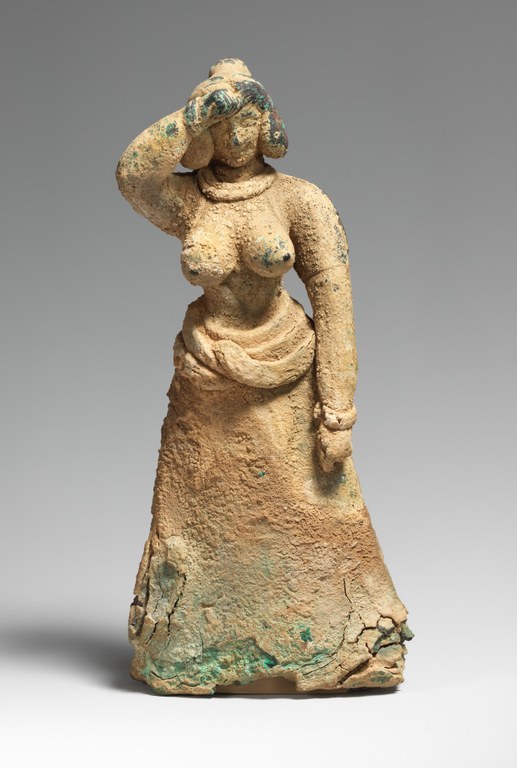
I think I see evidence of a continuous line from the skirt to the waist-roll on the figure on the left, found in Troas, which I think indicates some kind of skirt-folding situation. The woman on the right, found in Crete, looks more like she's wearing some kind of long coiled belt, or perhaps snakes. Who knows? I don't! For my own part, I found the combination of rolled waist + tie belt the most secure for doing things like kneeling, stomping around, and wading into rivers to rescue bees. I also liked that it gave me the bulk around the hips that gives Minoan figurines such a powerful silhouette, and proportionally gives more of an hourglass shape. If you wanted to do something more firmly grounded in the sources, stick just with the waist tie or belt, wrapped around a couple times and tied in back. If you want to be like me, just say "well we don't KNOW it didn't happen" and just do whatever you want. Have fun! Whatever happens, it should be fairly easy to move around in the kilt--this is not a restrictive garment, just a heavy one.
818 notes
·
View notes
Text
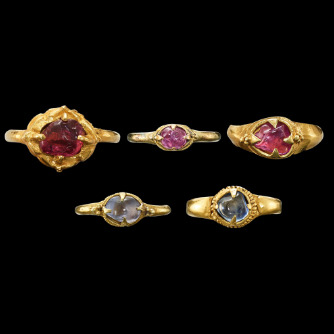
Collection of gold rings, Khmer (Cambodia) 7th-12th century AD
from Sotheby's
222 notes
·
View notes
Text
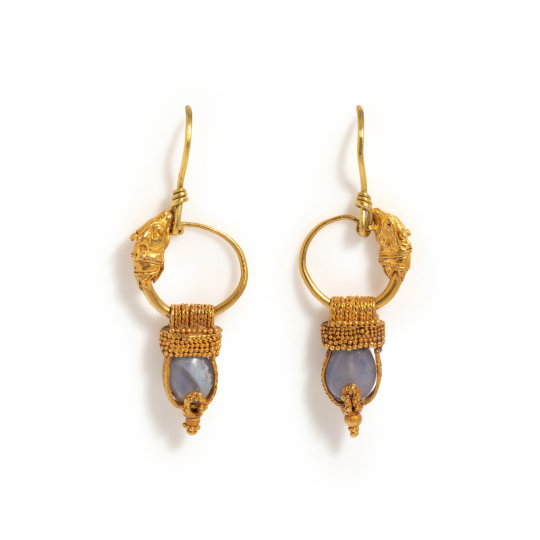
Gold and chalcedony earrings, Greek, 4th-2nd century AD
from Hindman Auctions
173 notes
·
View notes
Text
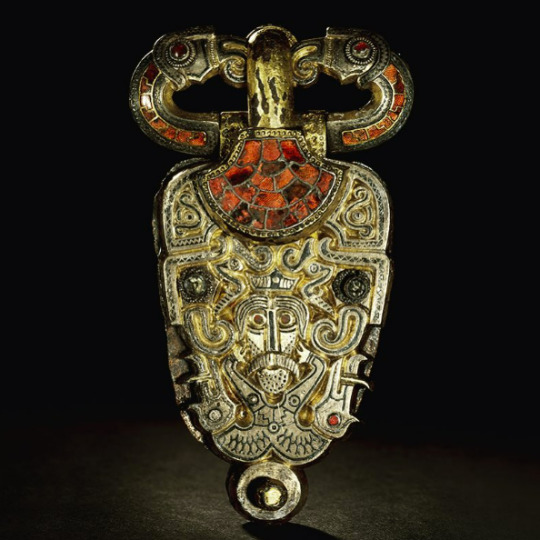
Pre-Viking gold buckle decorated with garnets, Norway, circa 600 AD
from The Museum of Cultural History, Oslo
#norway#historical artifacts#artifacts#history#norwegian artifacts#pre-viking#norwegian history#pre-viking history
723 notes
·
View notes
Photo

Bowl with Fish, Iran, probably Kashan (late 13th–mid-14th century).
41K notes
·
View notes